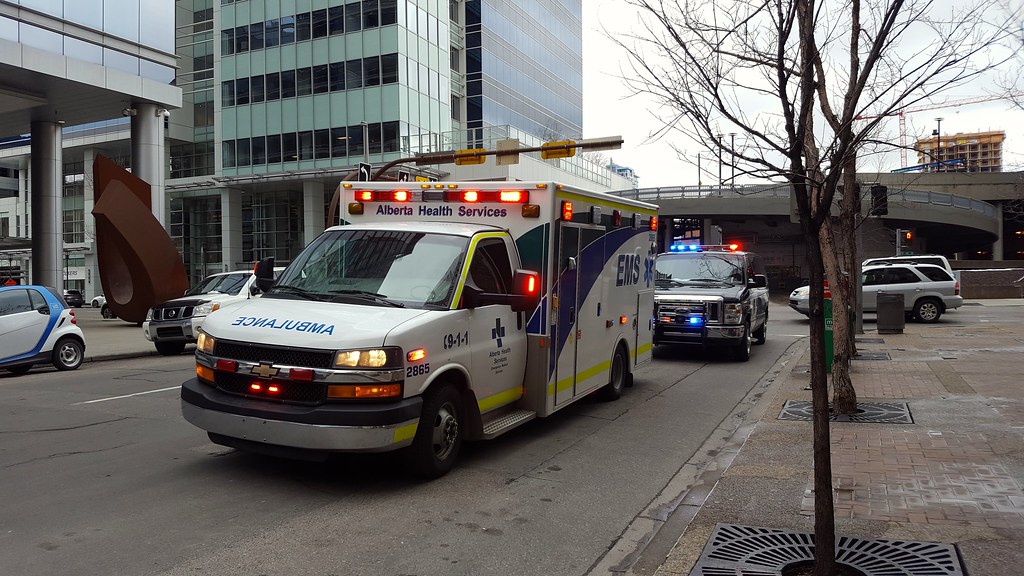The Most Common Spring Accident Personal Injury Claims (Part 1)

Even if it’s only a few months every year, winter in Alberta can feel like an eternity of brutal cold, blowing snow, and endless dark—it’s no surprise that as the snow melts, the weather warms, and the sun returns, Albertans are eager to get outside and enjoy spring.
Unfortunately, the return of warm weather means an increase in personal injuries; according to Statistics Canada, 23% of all injuries occur between late March and June. Over the course of this article and its companion piece, The Most Common Spring Accident Personal Injury Claims (Part 2), we will examine some of the most common types of personal injuries that occur during spring, why these injuries occur, and what you can do if you are injured due the actions of another.
Car Accidents
More people leaving their homes will result in more vehicles on the road—and that means more collisions. According to the Government of Alberta, over 30% of 2018’s traffic collisions that resulted in death, injury or property damage of $2,000 or more occurred during the spring, with June in particular experiencing one of the highest rates of fatal collisions that year.
Factors influencing spring’s increased rate of motor vehicle collisions include (but are not limited to):
- Increased amount of pedestrians;
- Increased amount of novice or beginner drivers sharing the road;
- Wildlife emerging from hibernation and foraging for food near roads;
- Localized flooding and/or improper drainage of melting snow and ice;
- Poor weather conditions (e.g., rain, fog, those unpleasant and sudden early spring flurries and snowstorms); and
- Increased numbers of potholes due to roads rapidly (and repeatedly) freezing and thawing.
Motorcycle Accidents
Melting snow and sunnier skies mean that spring is also the start of motorcycle season. According to statistics gathered by the Alberta Motorcycle Safety Society, a provincially registered non-profit society, 2020 saw a 90% increase in fatal motorcycle collisions over the previous year—and that 70% of the fatal collisions were single-vehicle crashes.
In addition to the factors specific to spring that elevate the risk of a motor vehicle collision occurring, the Alberta Motorcycle Safety Society cites the high number of single-vehicle crashes as an indication that the motorcycle community needs greater emphasis on safety, motorcycle maintenance, and sharing the road.
Bicycle Accidents
While cycling as a means of transportation or as leisure activity provides health benefits, cost savings over driving, and ample opportunity to enjoy spring in Alberta, collisions causing injury (and even death) can occur. According to data from the Canadian Vital Statistics: Death Database, the period between 2006 and 2017 saw an average of 74 cyclists die per year—73% of which died after colliding with a motor vehicle.
While bicycle collisions can occur for many of the same reasons as motorcycle or motor vehicle collisions, data collected by the Canadian Coroner and Medical Examiner Database indicates that approximately 1/3rd of cyclists involved in a fatal event were not wearing a helmet. Furthermore, it is possible that as much as 32% of cycling fatalities may have been caused by one or more parties involved not following road safety rules, such as:
- Not stopping at a red light or obeying a stop sign;
- Unsafe lane change or change of direction—both by the cyclist and the other involved party;
- Cyclists wearing dark clothing;
- Bicycles not equipped with lights when riding at dusk;
- Cyclists riding on the sidewalk;
- Cyclists riding against traffic;
- Distracted driving by cyclists and/or drivers (e.g., wearing headphones, using a cell phone); and
- Speeding motor vehicles.

What Options Are Available If I’m Injured?
When you have suffered an injury (especially through no fault of your own), it can seem like every single system is working against you; the courts can be confusing and time-consuming, insurance companies will do everything possible to deny you compensation to which you may be entitled, and the parties responsible for your injuries may deny fault.
While there may be temptation to navigate an insurance claim alone, you will have to contend with complex and technical language, strict deadlines, and wealthy insurance corporations that make money explicitly by refusing to pay out claims.
A personal injury lawyer is the best ally you can have in the fight for compensation. A personal injury lawyer works for you—they can file the necessary paperwork; leverage strong knowledge of, and experience with, the legal system; provide disbursements to cover incidental costs while a claim is being filed; and ensure that you get every cent to which you are entitled.
If you have suffered a personal injury, contact the personal injury lawyers at Pipella Law today to learn how they can help you recover from your traumatic experience.
